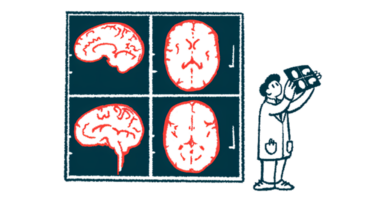Kesimpta reduces relapses, brain lesions for up to 5 years: Study
Treatment also showed increases in proportion of patients achieving NEDA-3

Up to five years of treatment with Kesimpta (ofatumumab) continues to keep the number of relapses and brain lesions low in people with relapsing forms of multiple sclerosis (MS), with most patients showing no evidence of disease activity.
These are new data from the ongoing ALITHIOS study (NCT03650114) wherein Kesimpta also continued to keep disability from worsening after five years while being safe and well tolerated. The study is sponsored by Novartis, which markets the therapy.
“Continuous Kesimpta treatment for up to five years showed sustained efficacy with very low relapse rates, profound suppression of MRI lesions and increasing NEDA-3 [no evidence of disease activity] rates,” Ludwig Kappos, MD, PhD, principal investigator at the Research Center for Clinical Neuroimmunology and Neuroscience Basel in Switzerland, said in a company press release. “Combined with its favorable safety profile, these findings support Kesimpta as a well-tolerated, efficacious treatment option for [relapsing MS].”
Kappos presented the data at the European Academy of Neurology (EAN) annual meeting, July 1-4 in Budapest, Hungary and virtually. His presentation was titled, “Five-Year Efficacy Outcomes of Ofatumumab in Relapsing MS Patients: Insights From ALITHIOS Open-label Extension Study” (abstract no. EPR-097).
How Kesimpta works; effect on relapsing MS
Kesimpta blocks the CD20 protein on the surface of B-cells, a type of white blood cell. The cells become overactive in MS and take part in the attacks against the myelin sheath that encases nerve cells in the brain and spinal cord, causing inflammation and damage.
Blocking CD20 can rapidly bring down the number of B-cells to near zero, according to the company. This is expected to help reduce relapses — when symptoms suddenly return or worsen after a period of improvement — and stall disease progression and disability.
ALITHIOS is an open-label extension testing Kesimpta’s long-term safety and effectiveness in patients who participated in ASCLEPIOS I (NCT02792218) and ASCLEPIOS II (NCT02792231), the two Phase 3 clinical studies that supported its approval for relapsing forms of MS.
In these studies, Kesimpta was tested against Aubagio (teriflunomide) for up to 2.5 years. Kesimpta is given once a month through a small injection under the skin, called a subcutaneous injection.
Of the 1,367 patients who entered ALITHIOS, 690 had initially been assigned to Kesimpta in the main trials, and 677 were switched to Kesimpta from Aubagio upon entering the extension study.
Results showed that patients on continuous Kesimpta continued to have very low relapse rates after five years, a mean of 0.39 relapses a year. Those who switched saw a “marked reduction” after switching, from 0.268 relapses a year in the first year of Aubagio to 0.048 relapses a year after five years.
Similar reductions were seen for both inflammatory lesions and new or enlarging lesions on brain MRI scans, to “an almost complete suppression of MRI lesion activity,” the researchers wrote.
Continuous Kesimpta treatment also resulted in an increase in the proportion of patients achieving no evidence of disease activity (NEDA-3), defined as the absence of new relapses, brain lesions, or confirmed disability worsening, from 80% after two years in the ASCLEPIOS trials to 93.4% after five years.
A significantly lower proportion of patients on Aubagio achieved NEDA-3 after two years (35%), but these rates steadily increased after the switch to Kesimpta, reaching 90.0% after five years and similar to continuous Kesimpta treatment.
“Ofatumumab treatment showed higher odds of achieving NEDA-3 over time in both groups,” the researchers wrote.







